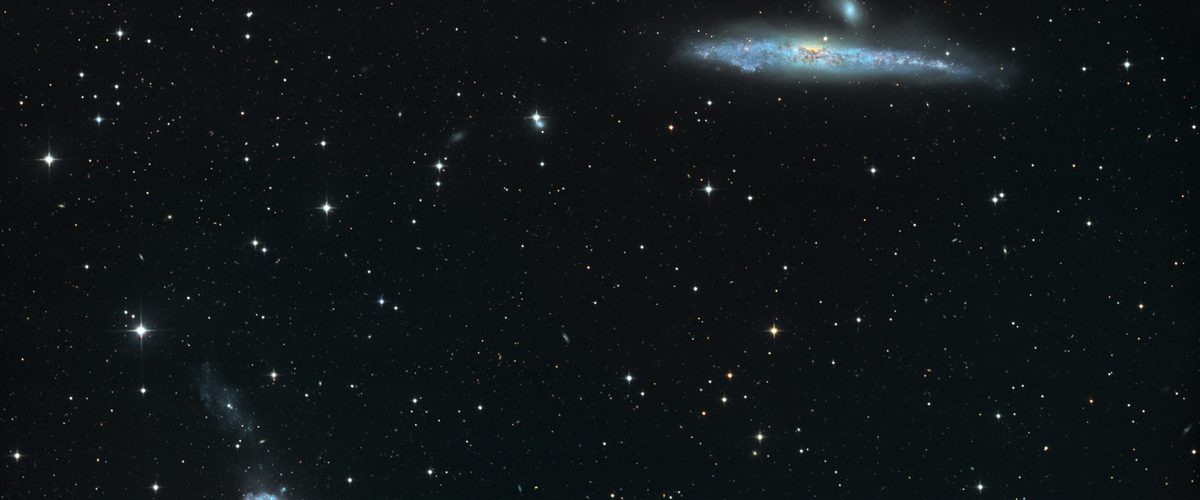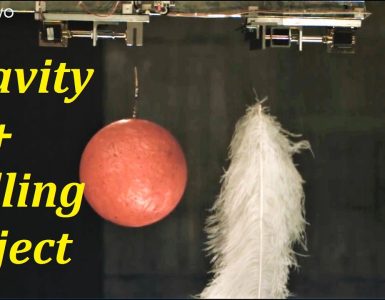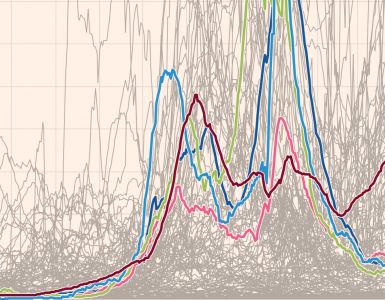(This was written some years ago for Lotus Realm Magazine under the title “The Great Wonder – Science and the Universe” Not my first title choice but nice to get it published. If you enjoy the article you’ll enjoy the books I’ve referenced at the end even more!)
After the sun has set, there is a very bright star visible just now in the western sky. Some years ago, when I was in India, I saw the same star setting westwards over the Arabian Sea. It was followed by a red star moving in the same westerly direction but setting much later. What are these bright stars? The one which is setting soon after the sun just now is Venus. ‘She’ is the goddess of love – beautiful, powerful, and sometimes jealous. Behind her across the Indian sky came red Mars called the God of War by the ancient Greeks. Another bright star in the Indian sky is Abhijit, Victorious, who helped the Hindu gods to conquer the asuras. (ref 1) Arabian sky-watchers called it Vega. Two more bright stars, one white and the other yellow, have been very noticeable for most of the past year if you live in the northern hemisphere at a latitude of about 65 degrees north. If you are a regular sky-watcher you’ll have noticed that they are not so bright as they were
last year and you’ll also know that they have been tracking across the sky relative to the other stars and that they weren’t there at all a couple of years ago. And these
two other stars? They are Jupiter, father of all these gods, and Saturn, the old god
whom Jove/Jupiter overturned to take the throne.
Mr. lyell’s and Mr Hutton’s Edinburgh Reflections

Leaving the sky and looking at the earth – near Edinburgh there is a spot called Siccar Point on the East Lothian coast of Scotland, where, in the early eighteen hundreds, James Hutton sat and looked at the layering in the rocks and left himself with only one way of explaining them: Uniformitarianism and the accompanying idea of Deep Time. Lyell’s book “The Principles of Geology” published in 1830 popularised Hutton’s reflections. This chain of reasoning that was to bring Hutton and Lyell right up against the deeply-held view of their day, namely that this earth of ours was wrought from nothingness by the hand of God some 4004 years previously. Not a Greek god this one, of course, but the Yahweh of the Old Testament. Hutton and Lyell realised that it had taken much, much longer than a mere 4,000 years to produce what they could see in the rocks all around them. Had they been in India in some equivalent spot they’d not have had such a hard time declaring these startling conclusions about the likely age of those rocks. Ancient Indian views of the cosmos had already portrayed the present universe as of an incalculable age. And, not only that, but of a nature where whole world systems periodically come into being and go out of being over an even more immensely vast timescale – thereby forestalling any need for the cosmological First Cause represented in the figure Yahweh. Hutton’s and Lyell’s train of thought gave rise to modern geology which has a lot more in common with the ancient Indian cosmological time-scale than it does with the Christian equivalent.
St. Hilda’s Shells
Further down the east coast of Britain is a place called Whitby. If you walk along the cliffs there and in the surrounding bays, you’ll likely come across some seashells. These shells are remarkable in that they are embedded in the rocks. In fact they are rock – but somehow in the shape of shells. Some are recognisable from the ordinary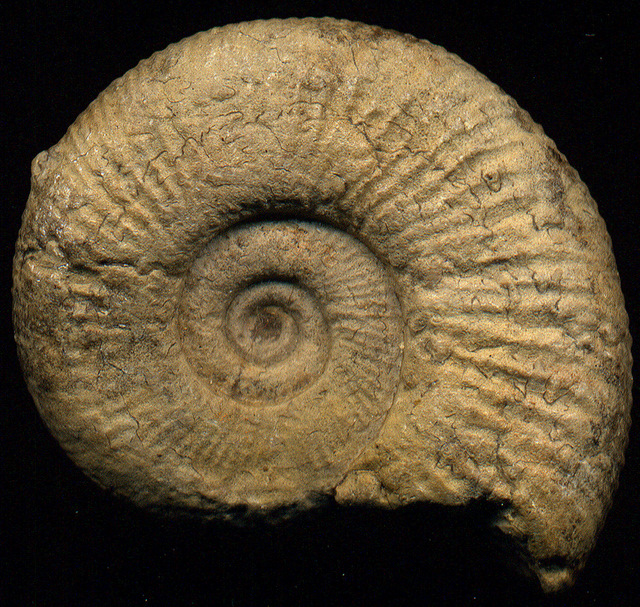
shells lying beside them washed up by the tide; some are unlike any shell washed up on the present day beach but clearly a shell nonetheless. The shells at Whitby are often spiral in shape. What are they? They are the coiled up venomous snakes which Abbess St Hilda changed into stone so that they would not bite and poison her monks and nuns in Whitby Abbey or the local population of Whitby. It’s not recorded what St Hilda thought about the bones of huge dragon-like creatures which occasionally became visible when parts of the Whitby cliffs collapsed. But no doubt such a determined and confident woman, having sorted out the snakes, would not have quailed at a mere dragon.
Myth and the First Scientists
Have you ever wondered what the fore-runner of science is? It could be myth. This is an idea suggested by Karl Popper, the 20th century philosopher of scientific method. (ref 2) One of his main ideas is that far from starting out with an open mind, then forming a theory by drawing inductions from objective evidence, in practice scientists start off with a definite view, then gather and consider subsequent evidence and then modify the view accordingly – or not, if they have too much invested in the old view. Myth, he suggests, might be the starting off ‘view’ of ‘proto-scientists’ many centuries ago. And a view begins with an emotional response. What might their emotional response to their world have been? Consider this imaginative description of pre-historic Man’s response to the universe he found himself in :
In the beginning, we may say, life was a mystery. That, at least, was how it seemed to primitive humanity. Without formulating it as such, people felt, as though in the blood, that life was strange, incomprehensible: a mystery. Then later on, though still during humankind’s unrecorded past, people began, consciously and explicitly, to think about life. Our ancestors apprehended that they were -without knowing how or why – in the midst of what seemed to be a strange and even hostile world, surrounded by all sorts of things which they could not understand or control. In the morning they saw the sun rise, and in the evening they saw it set. But why the sun rose and why it set, and what happened to it when darkness fell, they just did not know. Sometimes there were great storms – the world grew dark, rain fell, thunder seemed to crack open the earth and the sky would be lit up by an intermittent and terrible glare. But what caused these disturbances no one could tell. The days might be long and warm, or they might be short and freezing, but why they should be so was, again, a mystery. Eventually, they discovered that they could strike two stones together to make fire – and here was another mystery. Almost as soon as these mysteries arose, it seems, they would have been where named and given a place in a larger pattern of meaning whereby people could make some sense of their lives. (ref 3)
If this might have been the proto-scientist’s response I can recognise similarities with my own response as I grew up and started wondering and finding out more about the world I lived in. Being now somewhat better read than I was then, it also puts me in mind of Aristotle’s view that,
“It is owing to their wonder that men now begin, and first began, to philosophise.”
Aristotle mapped out the beginnings of scientific investigation and separated them into separate fields of enquiry. Philosophy and science (science is just the Latin word for ‘knowing’) were not such separate disciplines then as they appear to be now. Indeed, for a long time the philosophers and the scientists were the same men. And one or two of them were women. And the beginnings of science, certainly of the scientists’ aspirations, are to be found in the contemplative spiritual exercises of the Stoics and Epicureans. For the ancient Greeks, Natural Philosophy, Physics, was a necessary contemplative exercise which Aristotle describes thus:
…nature, which fashions Creatures, gives amazing pleasure in their study to all who can trace links of causation, and are naturally Philosophers.
And Philo wrote:
Those who practice wisdom are excellent contemplators of nature and everything she contains (they are joined in thought to the sun and moon, and all the other stars, both fixed and wandering) and though they are attached to the earth by their bodies they provide their souls with wings.
Is that not a wondrous piece of writing? That more than any other sentence I have yet found tells you what it feels like to try to understand the world we live in, in all its detail and complexity, and yet never lose a sense of its wonder and beauty. Indeed its wonder and beauty become even more clear and strongly felt in delving into its make-up, origins and design.
These quotes from Aristotle and Philo are from Philosophy as a Way of Life by Pierre Hadot. (ref 4) Reading that book and one by Brian Magee, The Great Philosophers (ref 5) has changed my opinion of Western philosophers. Twenty years or so ago I was a rather disparaging critic of Western philosophy as an occupation for seemingly idle thinkers who just sat behind their desks and made it all up as they pleased. (My criticism was uninformed but that didn’t stop me!) Scientists, it seemed to me at the time, were not so full of hubris and vanity. We got out there and did some actual work and got some evidence before we attempted to explain the Universe.
Magee draws out the links between the emergence of ideas in Western philosophical
terms and the parallel empirical observations and emergence of scientific ideas. What is fascinating in his book is how he brings to life the interplay and even
cross-fertilisation of ideas between them.
Iron Scourges over Albion
But not everyone feels towards scientific enquiry like this. Indeed some have felt the opposite. William Blake didn’t like Isaac Newton’s new take on the world. The great English visionary rejected what he saw as the notion of God with measuring callipers in his hand.

He wrote:
For Bacon and Newton, sheath’d in dismal steel, their terrors hang
Like iron scourges over Albion Reasonings like vast Serpents
Infold around my limbs .. (ref 6)
John Keats trained as a surgeon but thankfully for us gave it up and gave us his poetry instead. He too resisted what he felt to be the implications of Newton’s work on the nature of light and his discovery of the scientific origins of the rainbow. When he wrote,
‘Beauty is truth, truth beauty, – that is all
Ye know on earth, and all ye need to know’
He was protesting against the discovery of how prisms diffract sunlight into rainbow colours. He felt that unweaving the rainbow stole possibilities of beauty and
poetry from the world. For a fascinating account of this kind of emotional response to science see the book Unweaving the Rainbow by Richard Dawkins. (ref 7) Though disagreeing with Keats’ response, Dawkins pays tribute to Keats’ sensitivity and genius: ‘Keats was a more likeable character than Newton and his shade was one of the imaginary referees looking over my shoulder as I wrote.’
But despite these responses, perhaps the impulses which led Blake to mysticism and Keats to poetry are much the same sense of awe and wonder that lead others to look at the skies, the oceans, the landscape, and all their myriad occupants and prompt them to much effort, thought and experiment in trying to find out how these wonders have appeared, their causes and conditions, and their underlying connections.
World-shattering Inconsistency
To return to the proto-scientists:
… the particular view of the world held in any one society or social group … would satisfy people for perhaps a very long time indeed. But eventually some inconsistencies would appear, some aspects of the world or of themselves would be discovered that could not be explained within that system, that would not fit into it. Some people would then simply choose to muddle along with the old system, making a few adjustments here and there, while others would dismantle the whole apparatus and start again from a completely different governing principle. (ref 3)
This is the hub of it! – ‘eventually some inconsistencies would appear’. This is the essential scientific point of no-return.
What do you do when an inconsistency appears in your life or work? How do you feel? Excited? Curious? or Threatened? Fearful? Complacent? Do you want to draw out the inconsistency more clearly? Ignore it? Or swamp it with quibbles and old theories refurbished for the occasion? These sorts of inconsistencies are the cutting edge of science. They are the windows that open out to better and deeper understanding. The process of gaining understanding involves a readiness to let go of the old ideas, even though your scientific reputation may have been founded on them! The ideas and theories of science can only be provisional, not to be known with absolute certainty, and a good scientist is aware of that. If he were not aware of that there would be no way he could be a scientist because he would have no way for him to improve his theories and predictions.
As a young researcher in chemistry, I was brought up on this sort of ‘creed’. I remember an initial panic in the first few weeks of starting my PhD work. It went along the lines of how was anything I found out (about that fascinating subject the catalytic properties of titanium dioxide) going to be able to stand significantly beside the great body of what was already known? After all it might not agree with what was already known. In that case, why would anyone pay any attention to me? The answer, I realised, was that everyone would pay attention to my results – if I did the experiments reproducibly and in accordance with scientific method. If I did that and discovered a major inconsistency then it was open to me to dismantle the preceding body of scientific thought on the subject and rebuild it on a firmer footing that explained more than had been explained before – and other scientists would accept that.
In fact the catalytic properties of titanium dioxide, though interesting enough in their way, did not overturn much of the currently held scientific theories on catalysis! But nevertheless – imagine the thrill of watching an experiment come to its conclusion aware that only you, of all beings on the planet, knew what had happened. These experimental conditions had never existed together before, nobody had ever seen this before and so far only you knew about it. And often you didn’t understand it!
But go back a hundred and fifty years and you find the publication of a piece of scientific research and thought that really was world-shattering in its implications, namely the publication in 1859 of “On the Origin of Species” by Charles Darwin. It’s not that easy a read but there is a version of the same ideas and arguments, updated with subsequent discoveries, called “Almost Like a Whale” by Steve Jones.(ref 8) Try that. To understand the uproar caused by Origins you need to know that it came out subsequent to Lyell’s Principles of Geology. Together these books dared to challenge the unchallengeable, that hither-to-fore edifice of authority – the Bible. Actually Lyell and Darwin were not the only source of challenge to the Bible in nineteenth century Europe but they especially brought to bear one very important quality of science. Science works. It is incredibly successful in describing and understanding the world around us, in making predictions, and in providing the underlying theory for inventors and innovators. It has a lot of weight because of that. People may not like its conclusions but they can’t gainsay the weight of empirical evidence with which it backs up those conclusions. In fact, of course, people can gainsay anything and frequently do. The Darwin / Lyell world view is still being denied and opposed by Creationists in USA and elsewhere. Just not with any evidence!
Going back to the idea that science starts with myth. I think this is a way of saying that science starts with a sense of wonder, and it looks and observes the object of its wonder. A long time ago things were explained by myth .. And then at some point some people began to think the myth was being taken too literally.
Modern science has mainly been a western phenomenon, though with important
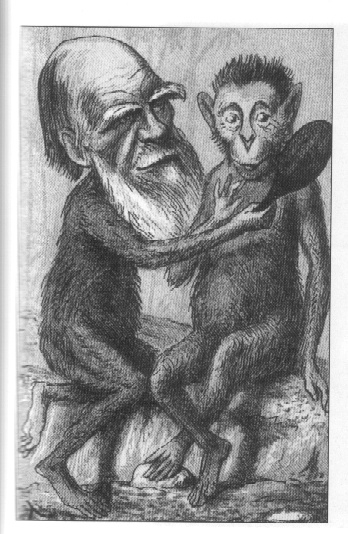
exceptions. A major myth of western culture is the myth presented in the Bible. What happens when the scientist starts to gather evidence that what the myth suggests to be true is in conflict with our actual experience in world? That depends on whether people believe their own myths literally. The uproar in response to Origins was probably in direct proportion to the tendency within Christianity to believe fully and literally in its own myths – especially its myth of Creation, Created and Creator. It has to be admitted that a myth which places mankind at the head of Creation has some appeal to one’s ego. No wonder, then, that Darwin was mercilessly lampooned, and worse, for telling us that we were in facts descendants of monkeys!
God’s Funeral
Some of the scientists, philosophers and theologists of 18th and 19th century Europe were in process of demolishing the Bible’s claims to authority. What I sometimes feel connected with when attempting to understand the thinking of these philosophers is a great surge of freed imagination and purpose, strong enough to demolish whatever wrong thinking it encountered. Hume and Kant helped undermine Ontological, Cosmological and By Design proofs for the existence of God. To put it simply, these were ‘proofs’, actually just statements, that God existed because He was a ‘necessary’ Truth; or He existed because things are contingent and need a necessary First Cause; and the related argument that things being so obviously designed there must be a Designer. The German scholar and theologian David Strauss gave a helping hand to the demolition process with his linguistic and historical analysis of the Bible. His work was translated into English by George Eliot under the title of The Life of Jesus. Biblical authority couldn’t stand up to such analysis which was probably why none of it was studied in Catholic seminaries of the time.
What was Darwin and Lyell’s particular contribution to all this movement of reaction against the major myth of their times? Lyell’s geology demonstrated the impossibility
of believing that the world had been created all in one go some few thousand years ago. In Darwin’s case, others before him had promoted a theory of evolution
but his unique contribution was to expound the theory of natural selection and thus remove any necessity for what has been called a ‘metaphor of purpose’ when contemplating natural history. The notion of God was no longer a necessary truth, cause or designer. Further, Darwin showed there hadn’t even been a nice regular staircase of development with man standing on the top floor. There were in fact many hopeful starts that came to nothing. Evolution can happen – but frequently doesn’t. There is no evidence of an imperative purpose involved in it. He also provided an alternative explanation for those stone snakes and dragons on Whitby beach! Was ‘God’s Funeral’ about to begin? At least in Europe? All these different threads and influences are followed through in A. N. Wilson’s book of the same name.(ref 9)
Did the challenge to religious authority by Giordano Bruno and Galileo some 200 years before come to fruition with Darwin and his fellow scientists and philosophers?
Giordana Bruno thought that the universe, like God, was infinite, that the earth travelled round the sun and that in the cosmos there were many earths. He was
burned at the stake in Rome in 1600. His brave last words were:
‘I neither ought to recant nor will I. I have nothing to recant, nor do I know what I should recant.’ (ref 10)
Is it possible to read those words and not feel gratitude, respect, immense admiration of the courage and conviction human beings can show in the service of the truth, knowing that their actions are leading straight to death? In this case a very painful death.
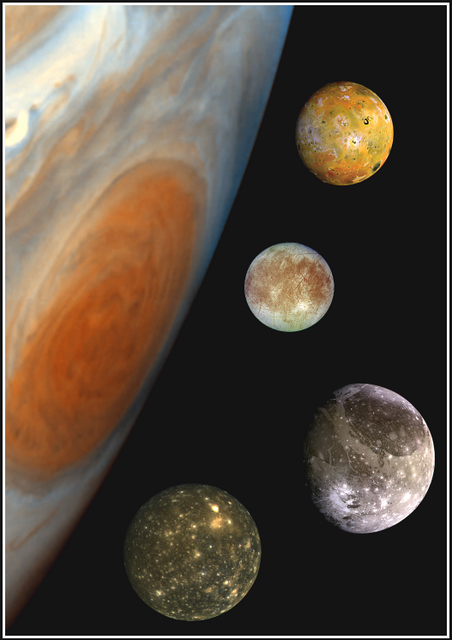
A Sense of Mystery
In 1610, Galileo looked through his telescope and saw Jupiter and four of its moons. Not a wandering star but a planet and one, like the Earth, that revolves round the Sun not the other way round. Nowadays, with a click of a mouse button, science gives us awe-inspiring close-up photographs of this giant of a planet – as awe-inspiring surely to some of us as his mythic predecessor was to the Greeks. And is not Venus as beautiful as ever in the evening and morning skies? Though now we know that she too is a planet shrouded not in ‘the mists and yellow fruitfulness’ ,of Earth but in her own trailing clouds of sulphuric and nitric acids and carbon dioxide covering forever her often molten surface of glowing lava and flowing rocks. Only a few million miles between us and Venus and yet look at the difference – on this earth conditions combine to form Keats and Newton, oceans and blue skies; on Venus, no such life is possible. Much the same can be said for Mars, the red planet – a few million miles in the other direction and again no such life can exist. And who knows what planets revolve round Vega! Indeed who knows – as yet – what planets and what beings revolve round any of the myriad stars in our own galaxy or any of innumerable other galaxies, some of them now visible to us via the Hubble telescope that orbits high up in our sky. In some ways the ideas that so shook the world of 19th century Europe have become commonplace. But that may not be to our advantage. It’s one thing to be convinced, it’s another merely to take it for granted.
The challenge to Christian religious authority is well established now, even commonplace. But although Darwin certainly held irreligious non-Christian worldviews himself and many others of his contemporaries found their way to similar positions, it was by no means true that most 19th century scientists did so. Or even 20th century scientists. The question to be raised and answered is again about myth. Myths can be undermined if they are held too absolutely and they can be in conflict with experience. Does this mean there is no place for myth in our lives? Or no place for religion? Einstein certainly did not think so:
Science without religion is lame. Religion without science is blind. The most beautiful and deepest experience a man can have is the sense of the mysterious. It is the underlying principle of religion as well as all serious endeavour in art and science.
(Ref 11)
Nor would Newton, though he had his difficulties with some Christian dogma:
I don’t know what I may seem to the world, but, as to myself, I seem to have been only like a boy playing on the sea-shore and diverting myself in now and then finding a smoother pebble or a prettier shell than ordinary, whilst the great ocean of truth lay all undiscovered before me.
Truth is the offspring of silence and unbroken meditation.
Much more could be said. In particular about science and Buddhism – indeed this is the first mention of Buddhism in this article! I might have said a lot about impermanence and insubstantiality and to what extent empirical scientific enquiry can find its way to the Wisdom which Buddha points us towards. What and where are the limits of reason? Or I might have attempted some comments about the implications for a Buddhist scientist of Hume’s thoughts on causation. It is fairly easy for such an scientist to be complacent about the provisional nature of scientific thought – about how it can’t be proved but progresses through being disproved. It is another thing altogether to contemplate that perhaps there are no causal links at all. Where do Hume and the Dharma lead us in this respect and can science follow? I am not going to enter that domain here. It needs a lot more thought by me.
You probably haven’t read the White Lotus Sutra. It’s a sutra of nearly all myth and parable and has very little in the way of conceptual content. It also has very little that is in conflict with anything I’ve been talking about here. It can easily hold the Hubble telescope’s vastness of perspective, both of space and of time, within its own perspective of infinite world-systems and infinite space. It states in its own way the idea of an interrelated, interconnected and conditioned Universe.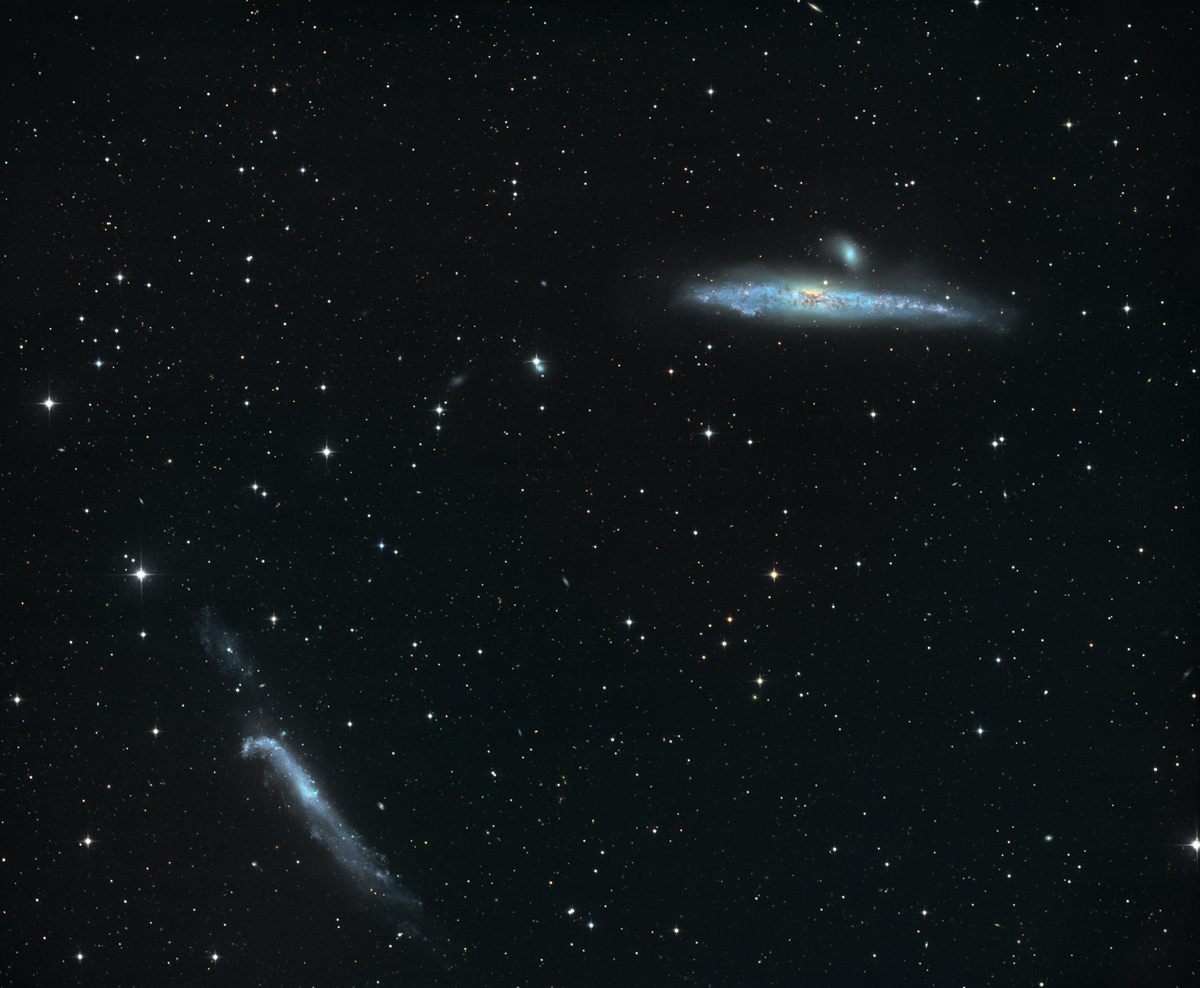
Mostly what impresses me still about Buddhism was that it is a religion that does not involve believing in God. When I first came across Buddhism what impressed me next was that I thought there would be no conflict between Buddhism and science, especially when I read about the levels of conditionality which Buddhism described as operating in the universe. I thought that Buddhism would fit very easily into a scientific perspective. It took me a few years to see that this was probably the wrong way round!
References:
1. Sagan, Karl, Contact, Century Hutchison, 2000
2. Magee, Brian, Popper,Fontana press, 1986
3. Sangharakshita, Who is the Buddha, p8 Windhorse, 1994
4. Hadot, Pierre, Philosophy as a Way of Life, p97-98, Blackwell, 1996
5. Magee, B, The Great Philosophers, OUP
6. Blake, William, from ‘Bacon, Newton and Locke,’ in Jerusalem
7. Dawkins, Richard, Unweaving the Rainbow, Penguin Classic, 1998
8. Jones, Steve, Almost Like a Whale
9. Wilson, A N, God’s Funeral, Abacus Books, 1999
10. Reston,James, Galileo -A Life, Cassell 1994
11. White & Gribbon, Einstein – A Life in Science, Simon and Schuster, 1994.
